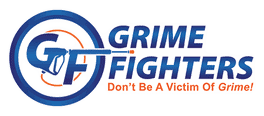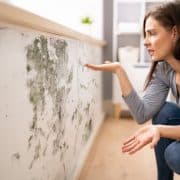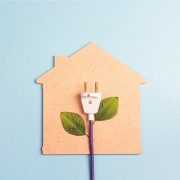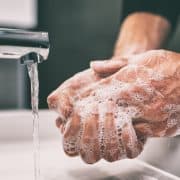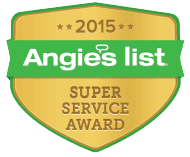REMODELS, REMEDIATION, AND REMEDIES
HIDDEN HOME DANGERS: BLACK MOLD.
Mold is a fungus which grows and thrives in moist environments. Mold may take on various colors, which signify various types or stages of growth. In all its forms, it becomes dangerous when inhaled or ingested. It simultaneously grows on and decomposes organic matter.
Mold, especially black mold in particular, forms in your home in the presence of prolonged moisture. This can be anything from a poorly ventilated kitchen or bath, a pipe leak, or an extreme event producing water damage. Noteworthy too would be organic materials which may hold on to moisture such as expired food, old books or newspapers or other organic materials, like leather, wood, and straw.
While airborne spores have not necessarily been substantiated as dangerous to immediate health, many find black mold to be the cause of, at the very least, an allergen response, being as it were, your body’s first line of defense. Allergic responses would include, but not be limited to, coughing, sneezing, itchy, watery eyes, nasal congestion, sore throat, and rashes. In some, this can even lead to an extreme asthmatic response, which can become an emergency. More than that, those with compromised immune systems are especially susceptible to symptoms and are at risk of fungal infections. In a post-pandemic world where nearly all of us have felt the effects of COVID-19, removing allergens and lung irritants is imperative, as many have developed lung and/or breathing issues. Where mold once posed no real threat may now be an entirely different ballgame.
While this foul-smelling fungus may seem imposing, it is easily treatable and requires minimal effort and expense to remove, provided it has not grown out of control (larger than 10 square feet), or is out of sight, in which case, professional remediation is a must. For manageable remediation, safety is imperative. It is noteworthy to remember that while removing black mold is simple, it does become more airborne, and thus poses a serious allergen to eyes, ears, nose, throat, and skin. Therefore, PPE is required, even if using the most natural solvents to remove.
You will need:
- Protective Eyewear
- Gloves
- Mask
- Clothing that can be sanitized or disposed
- Rubber shoes that can be disinfected
Mold is classically known for its musty smell and clustered, spotted appearance, but can also appear as red or pink (generally in bathrooms). As you remove the mold, you will need plenty of ventilation as it becomes airborne, especially when applying solvents. Remove and throw away anything which can not be cleaned. And of course, before you expend time and energy cleaning, be sure you have first addressed that which has sourced the black mold (water leak, dampness, damage).
Effective treatments include:
- Tea Tree Oil and Water Solution
- Vinegar and Baking Soda Solution
- Bleach and Water Solution
- Hydrogen Peroxide and Water Solution
DO NOT CROSS-MIX SOLUTIONS! CHOOSE ONE.
Preventing mold is never absolute, but helpful measures would include having good ventilation, especially in baths, laundry, and kitchens, limiting the overall humidity in your home to 50%, by means of a dehumidifier if necessary, as well as dealing with any water issue, leak, or flooding PROMPTLY.
Keeping your home clean and dry both inside and out and keeping gutters clean will limit the moisture and mold potential. Keeping your home’s exterior mold and fungus free can also assist by decreasing the amount of airborne spores that may enter from your home’s central air unit or via window and door.
Being sure to address the source of any mold or fungus that can affect your home may take time, energy, and money, but it will be far worth the effort to keep your home and your family healthy, preventing costly remodels, remediation, and remedies.
